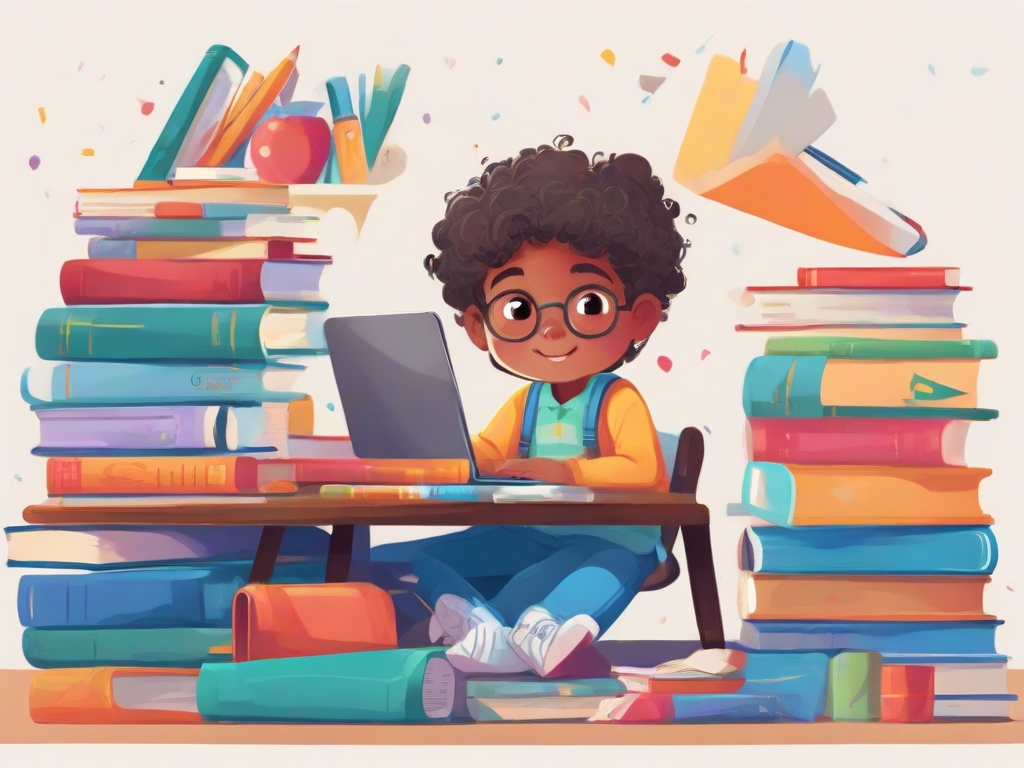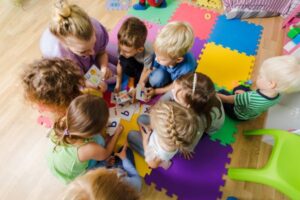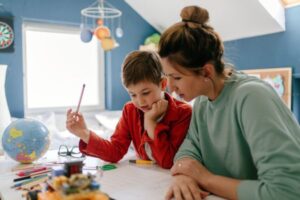In the ever-evolving world of education, blended learning has emerged as a transformative approach, seamlessly blending traditional classroom instruction with online or technology-based learning. This powerful educational model has taken center stage in homeschooling, offering a personalized, flexible, and accessible learning experience for students of all ages.
Unveiling Blended Learning: A Paradigm Shift in Homeschooling
Blended learning, also known as hybrid learning, is an educational approach that strategically integrates face-to-face instruction with online or technology-based learning. This synergistic approach aims to harness the strengths of both traditional and online learning environments, creating a dynamic and engaging learning experience.
Why Blended Learning Thrives in Homeschooling
Homeschooling families have embraced blended learning with open arms, recognizing its transformative potential. Let’s delve into the key factors driving the popularity of blended learning in homeschooling:
Personalized Learning:
Homeschooling parents can tailor the learning experience to each child’s unique learning style, pace, and interests. This personalized approach is well-suited for homeschooling because it allows parents to focus on their children’s individual needs and strengths. For example, a child who learns best visually can spend more time using online resources, such as video tutorials and interactive simulations, while a child who prefers auditory learning can listen to audiobooks and podcasts.
Flexibility and Structure:
Blended learning offers homeschooling families the flexibility to structure the learning schedule around their individual needs and preferences. This flexibility is crucial for families with demanding schedules or those who travel frequently. Parents can choose to use online resources for self-paced learning, or they can schedule in-person lessons with tutors or co-op groups. This flexibility allows homeschooling to fit seamlessly into family life.
Access to Diverse Resources:
Online resources provide homeschooled children with access to a vast array of educational content, including interactive simulations, multimedia lessons, and engaging activities. This diversity of resources caters to different learning styles and preferences, enriching the learning experience. Students can explore various topics and subjects at their own pace, and they can access resources that may not be available in a traditional classroom setting.
Technology-Enhanced Learning:
Blended learning incorporates technology to enhance the learning experience. Online platforms, apps, and virtual learning environments provide interactive tools, collaborative opportunities, and personalized feedback, fostering a dynamic learning environment. Technology can also be used to personalize learning, such as adaptive learning programs that adjust the difficulty level of lessons based on the student’s progress.
Socialization Opportunities:
Homeschooling parents are actively seeking ways to foster social interaction among their children. Blended learning can incorporate group projects, online clubs, and extracurricular activities to connect homeschoolers and promote socialization. Students can participate in online forums, discussion groups, and virtual field trips to interact with peers from around the world.
In addition to these key factors, blended learning also offers several other advantages for homeschoolers:
-
Cost-effectiveness: Blended learning can be more cost-effective than traditional homeschooling, as families may not need to purchase as many textbooks and other educational materials.
-
Accessibility: Blended learning can be more accessible for homeschoolers with disabilities, as online resources can be adapted to meet their individual needs.
-
Curriculum flexibility: Blended learning allows homeschoolers to tailor their curriculum to their specific needs and interests, rather than following a rigid set of state mandates.
Overall, blended learning offers a host of benefits for homeschoolers, making it a popular choice among homeschooling families. As technology continues to evolve, blended learning is poised to play an even more significant role in homeschooling, providing homeschoolers of all ages with personalized, engaging, and successful learning experiences.
Blended Learning Models: Catering to Diverse Needs
Homeschool families can choose from various blended learning models to suit their unique needs:
Blended Learning Models: Catering to Diverse Needs
Blended learning offers a variety of models to suit the unique needs of homeschooling families. Each model provides a different balance of online and in-person instruction, catering to different learning styles and preferences.
Flipped Classroom
The flipped classroom model is a popular choice for blended learning, as it allows for a more personalized and flexible learning experience. In this model, students learn new concepts and skills through online resources, such as video tutorials and interactive simulations, at their own pace. In-person class time is then reserved for interactive activities, discussions, and teacher guidance.
Station Rotation
The station rotation model is a great way for homeschoolers to engage with different learning styles and activities. In this model, students rotate through multiple learning stations, some online and some in person. Each station focuses on a different subject or activity, such as math, science, reading, or creative writing.
Experiential Learning
Experiential learning is a hands-on approach to learning that emphasizes active exploration and discovery. In this model, homeschooled children learn new concepts through experiments, projects, and real-world experiences. Online resources can be used to supplement experiential learning activities, providing additional information and support.
Project-Based Learning
The best blended learning model for a homeschooling family will depend on several factors, including the child’s learning style, preferences, and interests, as well as the family’s schedule and resources. Parents should carefully consider all of these factors when choosing a blended learning model.
Here is a table that summarizes the key features of each blended learning model:
| Model | Description | Advantages | Disadvantages |
|---|---|---|---|
| Flipped classroom | Students learn new concepts online and engage in interactive activities in person. | Personalized learning, flexible pace | Requires access to technology and reliable internet |
| Station rotation | Students rotate through different learning stations, some online and some in person. | Engages different learning styles, provides variety | Requires careful planning and organization |
| Experiential learning | Students learn through hands-on activities, experiments, and real-world experiences. | Active learning, promotes critical thinking | Requires access to materials and resources |
| Project-based learning | Students work on in-depth, collaborative projects that integrate various subjects. | Encourages student ownership, promotes teamwork | Requires careful planning and time management |






Be First to Comment